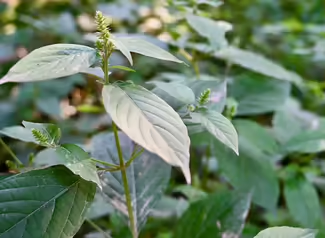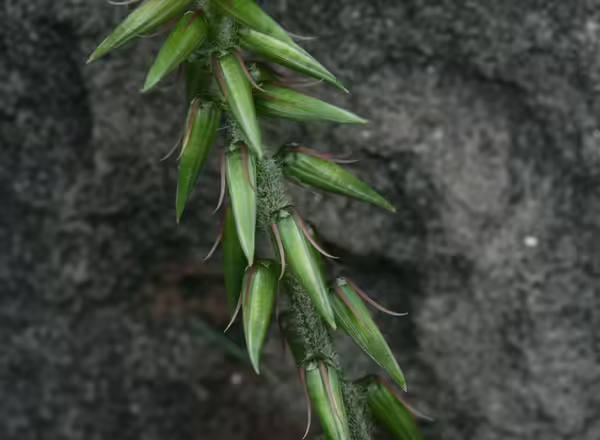
Invasive Chaff Flower
Chaff flower (Achyranthes japonica), also called Japanese chaff flower, is an invasive plant that is spreading fast. This perennial herbaceous plant grows densely, crowding out other plant species. It is easily introduced to new areas through seeds that move along waterways and stick onto fur and clothing. It is already a major problem in Kentucky, Ohio, Illinois, and Indiana and has been reported as far north as islands in Lake Erie.
Scientists and land managers are concerned about chaff flower because of the speed with which it takes over after it arrives in an area. It forms dense monocultures in sensitive riparian habitats which negatively impacts native plant diversity and regeneration as well as habitat for other species and water quality.
Download a printable chaff flower information sheet:
Invasive Species Update Chaff Flower Noticias sobre Especies Invasoras: Flor de Paja Japonesa

History of Chaff Flower
Chaff flower is native to Asia. Its first detection in North America was in eastern Kentucky in the 1980s. Since then, it has rapidly spread, especially along the Ohio River, and more recently down the Mississippi River. There is also a large population in the Atlanta, Georgia area.
Regulation of Chaff Flower
Chaff flower is not regulated as an invasive species or a noxious weed in Illinois.
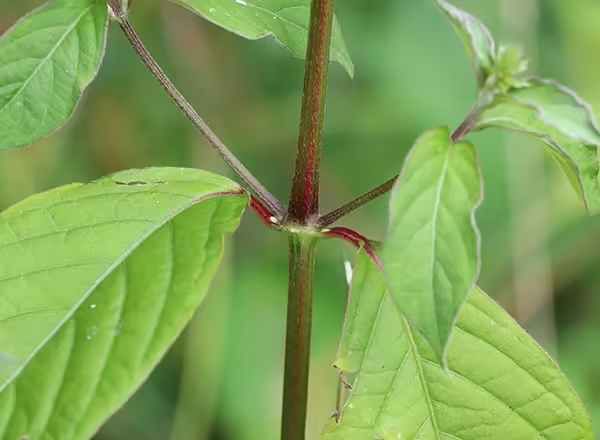
Chaff flower is a habitat generalist, and it can grow nearly anywhere. While it prefers and has spread most rapidly along stream systems and bottomlands it also thrives in a wide range of other habitats including roadsides, ditches, field edges, and gardens. It prefers partial sun and moist soils, but it can also grow in shady or drier conditions.
This perennial herbaceous forb grows 3 to 5 feet tall. It has opposite leaves with smooth edges with very prominent, arching veins and pointed tips. The leaf color can vary, from reddish purple to bright green. The stems are squarish and nodes where leaves are attached are inflated and frequently have a reddish color. Individual flowers are small and green, not very distinctive, but occur in a distinctive bottlebrush spike. As flowers mature into seed this spike elongates with fruits (papery chaff over a single seed) held along stem. Two stiff hairs (bracts) on the backs of the fruits make them stick to clothes and fur. Leaves die back in fall, but stem (and the seeds on it) remain through winter turning a tan light brown color.
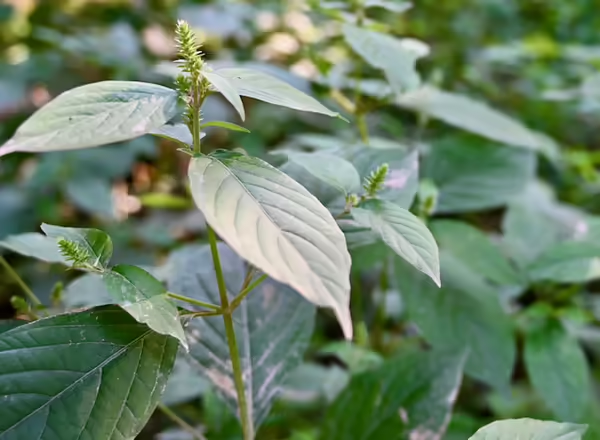
Chaff flower can be hard to distinguish from other plants until flowering, at which point the bottlebrush spike is distinctive. Venation on leaves of small plants can look almost like a young dogwood or basil plant. Other look-alikes include:
- Devil’s horsewhip (Achyranthes aspera): This species is also an exotic invasive. The vegetative parts look very similar to chaff flower. Key distinguishing features: Flowers tend to have more purple or red color compared to chaff flower and there are feathery protrusions in between the stamens of the flowers (called pseudostaminodes). These protrusions are smooth in chaff flower. To date, Devil’s horsewhip is only known to occur south of the invasive range of chaff flower.
- Iresine (Iresine rhizomatosa): Key distinguishing features: Iresine flowers are white and occur in a large, loose cluster at the top of the plant. The leaves are also opposite but narrower and more elongated compared to chaff flower leaves.
- Lopseed (Phryma leptostachya): Key distinguishing features: Leaves of lopseed are wide and coarsely toothed along the margins, as compared to the smooth, entire margins on chaff flower. Lopseed fruit have prominent points that arise from the front of the fruit whereas the barbs on chaff flower arise from the base of the fruit.
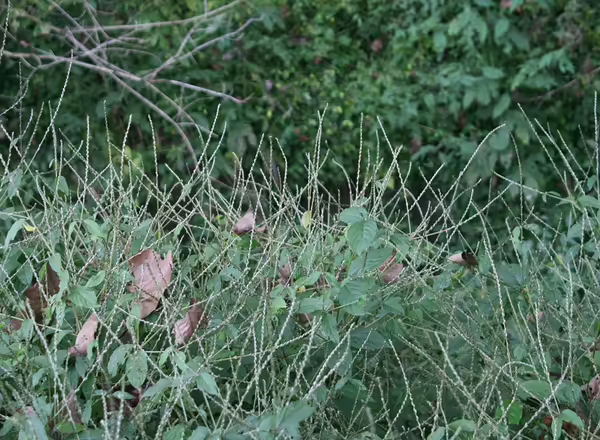
Managing chaff flower requires patience and persistence. Prevention is better than removal.
- Prevention: Chaff flower readily spreads via seed and preventing accidental seed introduction is key for slowing its spread. Avoid working in, walking through, or driving vehicles through areas with lots of chaff flower while plants are seeding and make sure to clean off shoes, clothes, equipment, and animals after traveling in infested areas. Continued monitoring for new arrivals from seed and the seedbank is key to preventing re-establishment of chaff flower as well as other invasive plants.
- Mechanical: While occasional small plants can be pulled, hand pulling is not an effective option for larger plants because the root system is difficult to remove. If timed right, mowing and cutting can be used to stop that year’s seed set, but that won’t kill the plant once it has grown more than three nodes in height.
- Fire: Late-season prescribed burns can kill adult plants but may not slow its spread because of seed bank recruitment.
- Chemical: Always read and follow herbicide labels before initiating treatment. There are many herbicide options for spraying the foliage that will also kill the root system. Control should be conducted before chaff flower produces seed in late summer/ early fall to reduce the risk of moving seed on equipment and clothing. The following herbicides have been shown to be effective at controlling chaff flower: 2,4-D ester, triclopyr amine, glyphosate, aminopyralid, triclopyr and fluroxypyr mix, and aminopyralid and metsulfuron mix.
University of Illinois Extension Forester Chris Evans reviews how to identify Japanese chaff flower along with discussing its ecology, history in North America, and its current known distribution. This presentation was part of the 2021 Japanese Chaff Flower Summit, hosted by the University of...
Help track chaff flower and other invasive plants by reporting sightings through EDDMapS. Either download the app or report plants through the website.
Resources on Chaff Flower
Explore more about Chaff Flower through recorded presentations from the 2021 Japanese Chaff Flower Summit.



